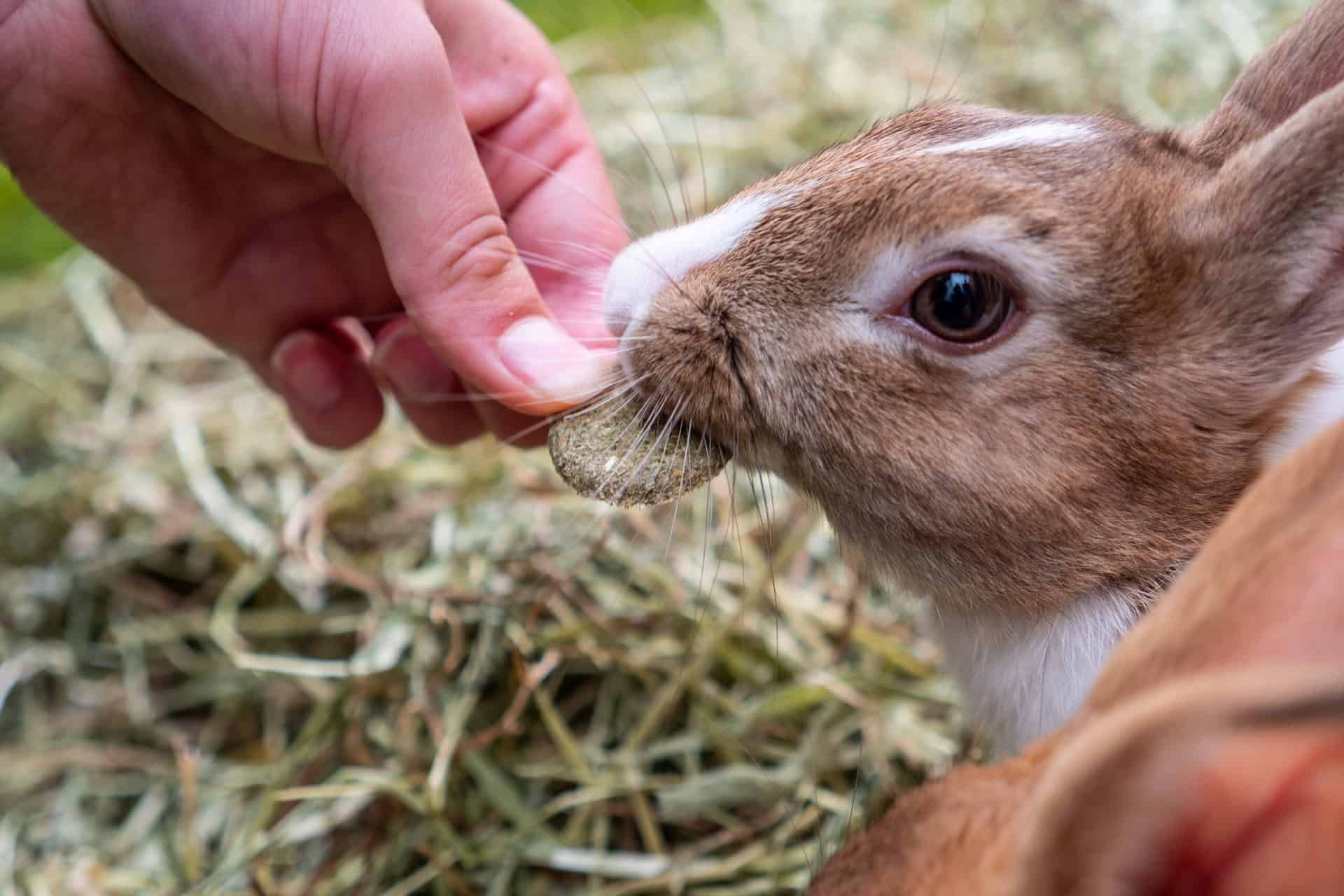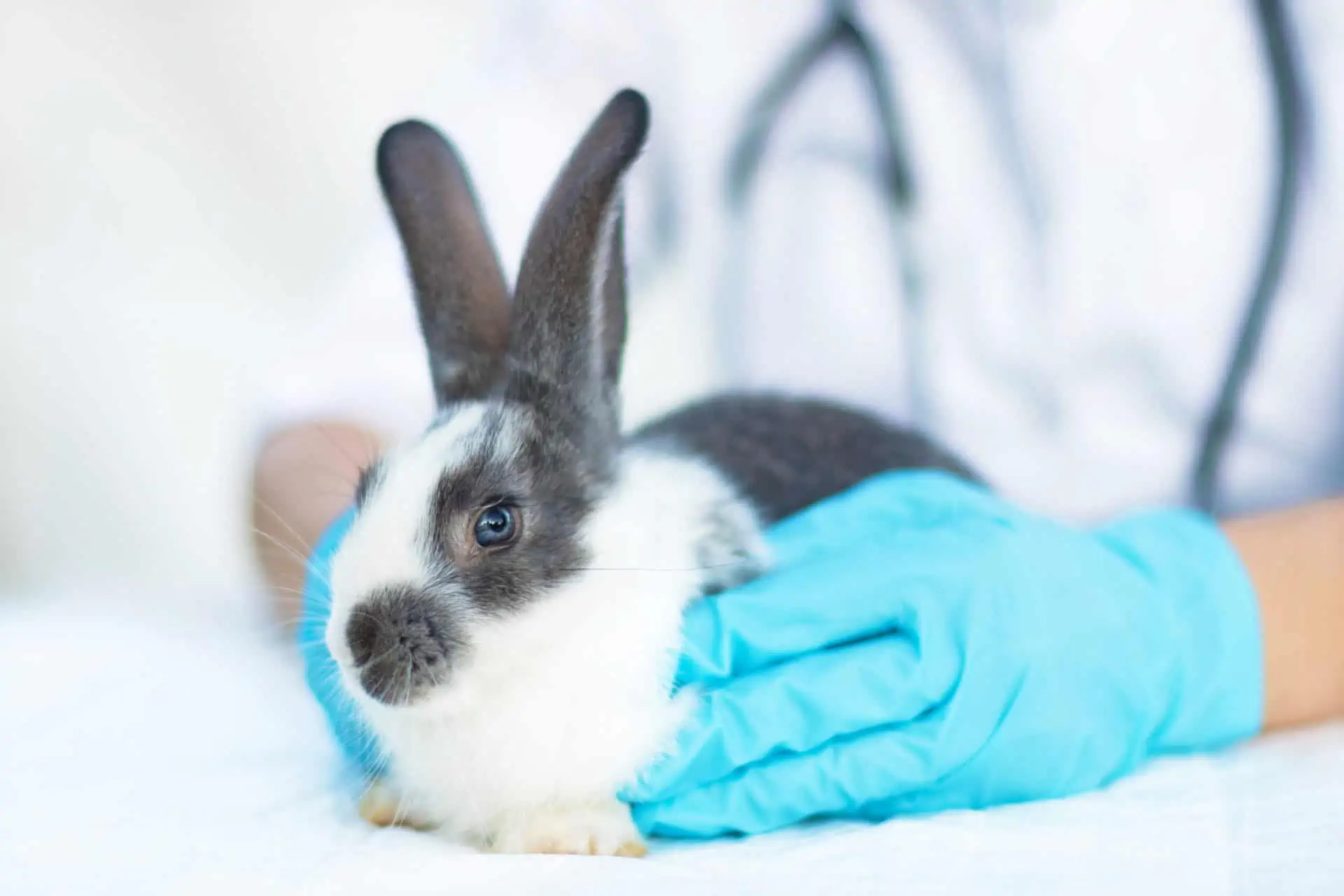Rabbit Companionship
Companionship for your rabbits
Rabbits are social animals. This means they must live in pairs or groups to keep them happy. Littermates usually make the best companions – but they should always be neutered! Rabbit siblings can mate with each other, and with a litter size ranging from 1 – 14 kittens (baby rabbits) you could quickly have a lot more rabbits than you thought.
Never keep rabbits and guinea pigs together. They have different food and housing requirements and could fight. Rabbits also carry a bacteria called Bordetella Bronchiseptica which can lead to severe pneumonia in guinea pigs.

Bonding with your rabbit

How to hold your rabbits
Once they’re comfortable around you, your rabbits will like being stroked and being around you. Generally you should avoid picking your rabbit up, instead interact with them on the floor, where they feel safer.
If you do need to pick your rabbit up, place one hand under their chest and the other under their hind legs. Always hold them against your body so they feel secure. Never pick a rabbit up by the ears or the scruff of the neck.
Rabbits are not aggressive by nature, but they can bite, scratch or kick if they feel nervous. Often this happens when you are handling them, so it’s a good idea to handle them from an early age.
Introducing new rabbits
Here are some top tips for successful bunny bonding:
Put your rabbits’ housing near each other. Make sure they can see each other but give them plenty of hiding places in their housing so they can leave if they want to.
Swap their scents over. Place a small amount of hay or a cloth with their scent on in each other’s housing to help them get used to each other’s smell.
Once they’re used to seeing and smelling each other, put them together for short periods of time. Put them together on neutral ground, for example your living room, rather than in one of their environments. Make sure you’re always there and watching their behaviour! Rabbits chasing each other and some nipping is normal, but if you notice any escalation in behaviour separate them and try again at a later date.
You’ll need to introduce them to each other for short periods a few times. As they get more comfortable, gradually increase the amount of time they spend together and introduce toys, food, and plenty of hiding places.
Positive signs that things are going well include sitting or lying side by side, your rabbits grooming each other, sleeping next to each other and playing together.
Negative signs that you should slow down the bonding process or separate them can include chasing each other, fighting, growling or one rabbit mounting the other.
Once your rabbits are regularly showing signs of positive behaviour and are spending one to two hours a day together without any issues, you can introduce them to their shared living space. Make sure it’s as big as possible with lots of hiding places, access to plenty of hay and fresh, clean water. For more information on housing, check out our guide.
For more information on how to bond your bunnies, head over to the RWAF website.

